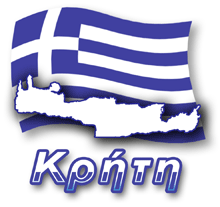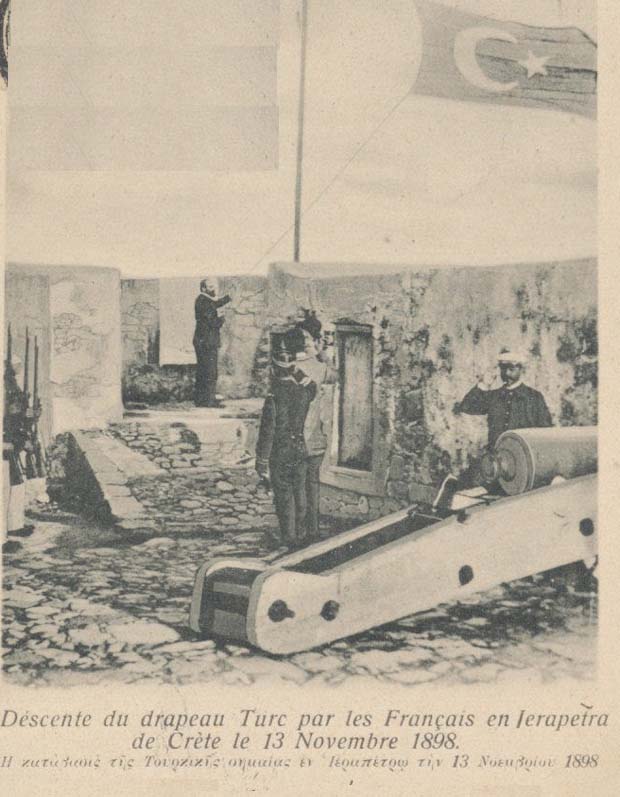
 2022-11-03 18:54:31
2022-11-03 18:54:31
It was Tuesday, November 3, 1898, when the last Turkish soldier left Cretan soil, and the flag of the centuries-old occupant was removed from the Firkas fortress in Chania. Today's date is symbolic for Crete, as it marks the liberation of the island after 253 years of the rule of the Ottoman Empire. This liberation, however, did not mean full independence and freedom.
The Turkish occupation of Crete began in August 1645. Turkish troops basically took control of almost the entire island without any problems. Chania surrendered first, then Rethymno was taken. However, the new occupiers of the island had to wait 22 years for the final victory. For that was the time of the siege of Heraklion, which surrendered only after more than two decades of fighting. During this time, the Turks were not able to break the resistance of the city's defenders.
 Turkish troops are leaving Crete. Port of Souda near Chania, 1898.
Turkish troops are leaving Crete. Port of Souda near Chania, 1898.
The photo comes from the resources of britishinterventionincrete.wordpress.com
After conquering Crete, the new occupiers began to impose high taxes and forced Islamization on the island's inhabitants. These actions and the lawlessness prevailing among the new rulers eventually led to vehement opposition from the Cretans. It was expressed in the Cretan uprisings against the Turks. In 1770, one of them was even declared independence, but in the following year the Ottoman army again took control of the island. Another revolt took place in 1821, just like the previous one, however, was suppressed. The next uprising took place in 1866 and it bloody marked the island. It was then that, in November 1866, during the siege of Moni Arkadiou Monastery by the Turkish army, the monastery's powder magazine was dramatically blown up, in which 700 Cretan women and children were killed. To this day, it is one of the most important events in the modern history of Crete. It was widely echoed in Europe and was of great importance for the liberation of Crete from Ottoman rule.
Ultimately, it was only the massacre of the Christian population that the Turks committed in Heraklion in 1898 that accelerated the end of the Turkish occupation of Crete. The governments of European nations, especially England, supported the island in negotiations with the Turks on the side of the Cretan strivings for freedom. However, the strong support of the hitherto pro-Turkish England was caused by the fact that 18 Scottish soldiers were also killed during the slaughter of Christians. Earlier, the English administration turned a blind eye to Turkish provocations. After August 25, the angry English decided to support the aspirations of the Cretans and thus punish the Turkish leaders.
As a consequence of these events, on November 3, 1989, the Sultan's army departed the island, but the Ottoman Empire did not cease to have a say in the matters of Crete. Formally, the island became an autonomous republic under the protectorate of the Ottoman Empire, which was allowed by the great European powers. Even on the flag, the presence of the Ottoman Empire was marked with a star on a red background. A substitute for parliament was created with Christian and Muslim deputies, and the function of High Commissioner of Crete was entrusted to the Greek Prince George I, who arrived at the port of Souda on December 9, 1898 and took over the administration of the island on behalf of the great powers.
 Download of the Turkish flag from the Firkas fortress. This symbolic photo even became a postcard at the time.
Download of the Turkish flag from the Firkas fortress. This symbolic photo even became a postcard at the time.
The photos in the article come from Candiadoc.gr
Several consecutive years have shown that the road to true unification with Greece was still a distant prospect. In 1908, Cretan MPs, taking advantage of the turmoil in Turkey, announced a unilateral union with Greece. The previous flag of Cretan autonomy was replaced by a Greek one, and the overriding document regulating all rights was recognized by the Greek constitution. However, the entire international arena, including Greece, which is a party to this act, did not recognize its validity. The Greek state recognized the relationship with Crete only in 1912. The white and blue flag of Greece began to fly over the Firkas fortress in Chania from December 1, 1913, when the official ceremony of concluding the union of Crete with Greece took place.
 2022-11-03 18:54:31
2022-11-03 18:54:31
Komentarze
Wypełnij poniższy formularz aby dodać komentarz
lub kliknij w poniższy link aby skorzystać z możliwosci komentowania przez facebooka:
https://www.facebook.com/crete.poland/posts/10158812908082551